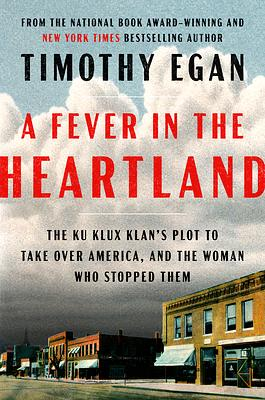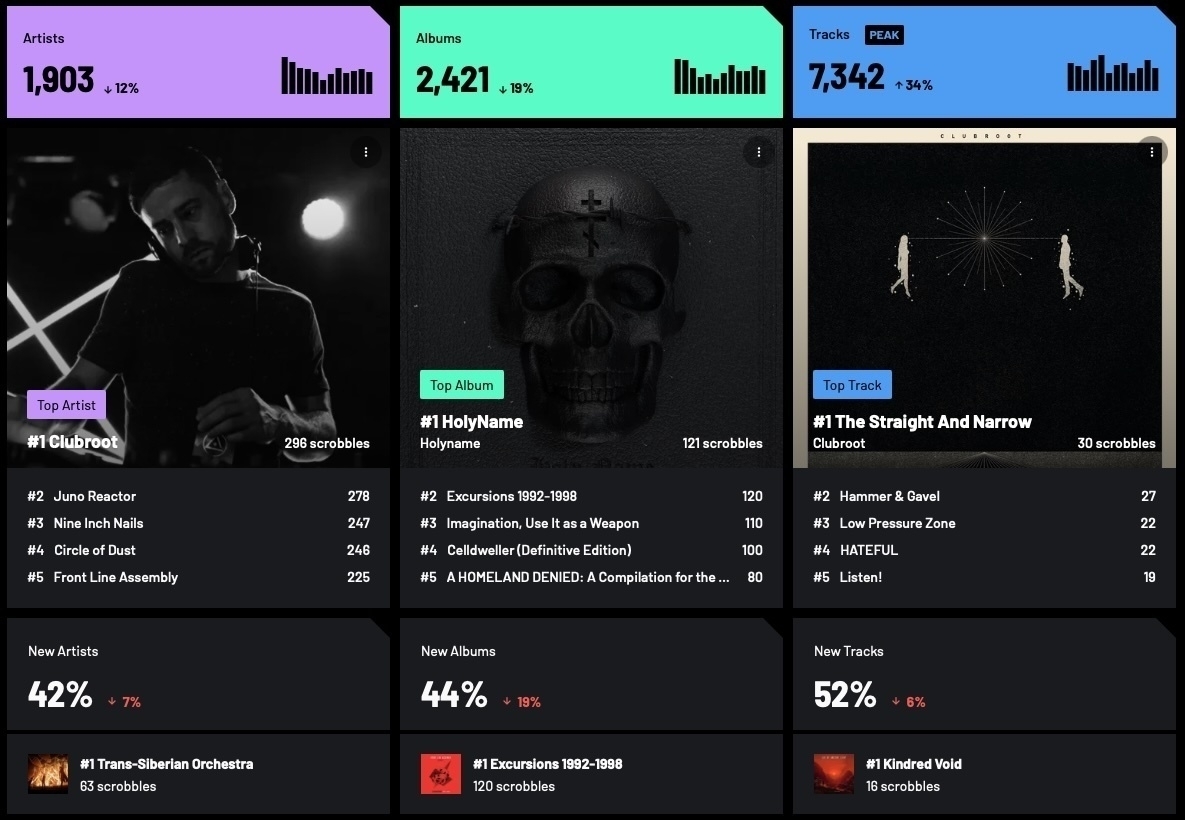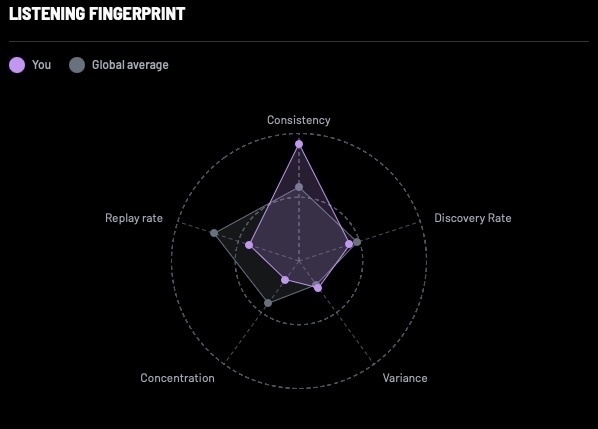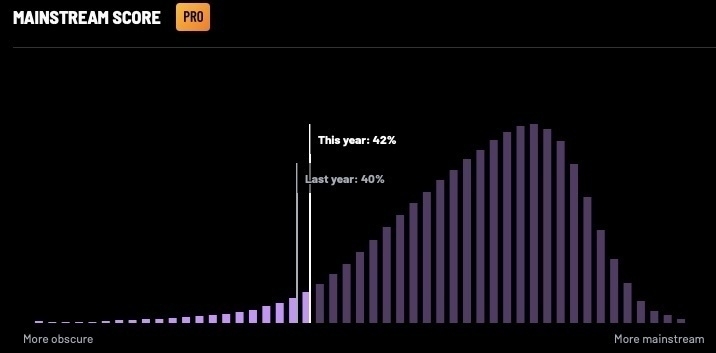Category: Review
You are viewing all posts from this category, beginning with the most recent.
🎲 Blame Design in Game Design
I suspect you’ve probably had an experience like this at your game table:
GM: “Orcs of the Red Moon Clan have AC 18”
Player: “Ok, wish me luck. Rolling to attack!”
…later…
GM: “Let’s make that pick lock a DC 18 check.”
Player: vents, complains, debates, bickers, argues, or becomes sullen
Why does the player accept AC 18 without issue, but pushes back against DC 18? After all, these are mechanically equivalent!
Because psychologically, they are not. Games are played by humans, and humans react to dynamics, not just mechanics.
The example above is what I would call a shift to “external blaming”. Here you have someone behaving ok when they perceive the system as providing the adversity, but reacting poorly when they perceive the person as making it hard. In both cases, the system and the GM together shape the difficulty—regardless of how it feels. (e.g. the GM could have given that orc different armor, or chosen a different adversary.)
Blame isn’t always directed outward. Sometimes, players turn it inward instead. We might call that “internal blaming”. You’ve probably seen this occur most in systems with “bennies” (where you spend currency to do better on a check) or with “push your luck” mechanics (where you decide how much you want to risk for the result). Maybe the player hoards their bennies, afraid to ever spend them. Or chide themselves when they spend and still fail. Whereas before they blamed the GM (or in some cases other players), in this case, they are hard on themselves.
Both external and internal blaming usually decrease the fun for everyone involved.
“But Todd” you might say “why don’t you just not play with people who aren’t emotionally mature enough to not succumb to these patterns of behavior? Maybe those games just aren’t for them?”
Fair question, hypothetical-responder-person! But I refer you back to the point made earlier that “humans are who play games”. It’s hard enough to schedule a group to play, and most humans have something they are dealing with.
Like the old saying about places of worship, I haven’t found a perfect gaming table, because once I join, it’s no longer perfect.
Perhaps a more useful question is: “what kinds of games do we bring to the table?” In other words, we can select for games that are more resistant to the types of blame that people in the group are prone to. Or maybe in #gamedev we can design for more blame-resistance in general, especially since we don’t always know the people we’ll be playing with.
But how?
It helps to remember that #TTRPGs are not just a game, they are also a conversation. Conversations benefit from affordances or “doorknobs”.
(I’m giving you a moment to go read.)
So we can build in more affordances. A game can design for multiple routes to success (e.g. inventiveness/problem-solving, equipment/tools, skill/system mastery, careful planning, quick-thinking, stat-improvement, NPC-help, etc.) allowing different ways for players to tailor their experience towards the achieving outcomes. A game can have “dials” that can be adjusted to dial up or down the GM/player input on difficulty (e.g. how often are bennies granted). A game can shift more things to have the feel of being “the system” than the GM/players (e.g. roll-under stat vs. roll vs. DC). These, and more, can help mitigate the blame game.
As in most design, this is a spectrum and there are tradeoffs.
Even in the games I’m working on, I have a variety. There’s a card-based RPG that is more susceptible to internal-blame, because players choose the next mode of play and the card(s) they deploy. I also have a troupe LARP, which are notorious for external blame due to downtime-action decisions. I’ll seek to minimize that with clarity around downtime possibilities and resolution processes. I also have a D20 hack that is very blame-resistant due to player-facing rolls, roll-under, and many-modes-to success.
I am mostly wary of games that go very hard in one direction. They can devolve into arguing with (or silently resenting) the GM (i.e. external blame), or to frequently feeling anxious about your choices (i.e. internal blame). In my experience, games designed this way often sound really neat on paper, but are not fun for many groups of humans that you would bring to an actual table.
What about you? Have you experienced this at the table? Has it changed what you play, how you play, or how you design?
📚 A Fever in the Heartland
Highly Recommended
Tells the story of how a grifter and serial abuser manipulated people to gain money and power. Loneliness was turned to belonging. Fear was turned to hate.
Also tells the story of courageous people that helped stop the villainy!
Almost every page has a parallel to current USA politics. A must read in these times.

📚 Read: The Hope of Glory by Jon Meacham
Not a coherent work, perhaps due to being a collection, rather than a planned book.
I was struck by no attempt at explaining how he can hold to both Universalism and High-Sacrament Orthodoxy at the same time.
📚 2024 Books Review
other 2024 reviews here
I am tracking all my completed books on my reading page and everything on Storygraph. (why Storygraph?) I would like to use micro.blog’s bookshelves, but it’s too buggy and incomplete at this stage.
This was a slow year, so I only completed 42 books. Here’s the summary from Storygraph.
Highly Recommended Books:
Non-Fiction:
- Amusing Ourselves to Death by Neil Postman. Still a relevant diagnosis for many of our current ills. (book) (post)
- The Ultimate Hidden Truth of the World… by David Graeber (posthumously). What if things don’t have to be the way they are? (book) (post)
- The Coddling of the American Mind by Greg Lukianoff and Jonathan Haidt. We are reaping the results from sowing distorted thinking. (book) (post)
Fiction:
- The Martian Chronicles by Ray Bradbury (book) (post)
- The Curse of Chalion (World of Five Gods #1) by Lois McMaster Bujold (book) (post)
- The Future by Naomi Alderman (book) (post)
Recommended Books
(Reverse-chronological order)
- Polostan (Bomblight #1) by Neal Stephenson (book)
- Sipsworth by Simon Van Booy (book)
- Midnight Riot (Rivers of London #1) by Ben Aaronovitch (book) (post)
- Mort (Discworld #4) by Terry Pratchett (book)
- The Shape of Joy by Richard Beck (book) (post)
- Convergence Problems by Wole Talabi (book)
- Dopamine Nation by Anna Lemke (book) (post)
- Death of a Cad (Hamish Macbeth #2) by M. C. Beaton (book)
- The Nature of the Beast (Gamache #11) by Louise Penny (book)
- Slow Productivity by Cal Newport (book) (post)
- Supercommunicators by Charles Duhigg (book) (post)
- The Rise and Reign of Mammals by Steve Brusatte (book)
- The Master and His Emissary by Iain McGilchrist (book) (post)
- Equal Rites (Discworld #3) by Terry Pratchett (book)
- Radical Respect by Kim Scott (book) (post)
- The Red House Mystery by A. A. Milne (book) (post)
- The Metamorphosis by Franz Kafka (book)
- Assassin’s Quest (Farseer Trilogy #3) by Robin Hobb (book)
- The PARA Method by Tiago Forte (book) (post)
](https://cdn.uploads.micro.blog/2363/2025/img-7811.jpg)
📚 Several folks have recently asked why I use something other than Goodreads, and particularly “why Storygraph”:
- It’s not hijacked by Amazon, yet
- The non-quantitative review elements (moods, questions, etc.) are much more useful to me than seeing that everything is 4.5 to 5 stars
🎶 2024 Music Review
other 2024 reviews here
2024 was the year that I found out that iTunes Match and Apple Music were “eating” my music by dropping files, replacing with different editions/formats, or failing to sync some material. I already knew that Google did terrible things when going from Google Play Music to Youtube music, but Apple was a surprise to me. I resolved to not let such things happen any more.
I set out to rebuild my library by:
- re-downloading lossless versions of my Bandcamp purchases
- getting the best format download from other places I’d bought digital music
- re-ripping our CDs in lossless format
- backing it all up
- normalizing metadata with MusicBrainz Picard
- running Plex Media Server to share the music
- running Tailscale to make the server available without putting it directly on the web
- running PlexAmp clients for an awesome listening experience
- scrobbling my listening with last.fm
I’m not finished with the project, but I have over 200 artists, 600 albums, and 6000 tracks re-deployed, with much more to come. Because I’m not complete, the listening may not have as much variety as it could have.

Artists:
- Clubroot is my go-to for evening chillout music
- Juno Reactor is a constant fave
- 3-5 are prolific industrial-ish artists that use various project pseudonyms, and I listen to a lot of each
Albums:
- HolyName’s self-titled is sorta doomcore taize and is a great Sunday listen
- Excursions is a collection of early Front Line Assembly side-project work
- Imagine… is a re-release of Juno Reactor’s first 5 albums as a compilation
- Celldweller is another project from Circle of Dust (Klayton/Scott) which has probably eclipsed CoD
- A Homeland Denied was a hardcore compilation as benefit for Palestinians
- Trans-Siberian Orchestra broke in for me this year, mostly because of their Christmas music
Tracks:
- 1 and 3 are a couple of those excellent Clubroot grooves
- Hammer & Gavel is a prophetic anthem from a 2-person wall of sound I discovered this year (American Arson)
- HATEFUL is a single from HEALTH and my favorite thing from them so far
- Listen! was one of my “listen on repeat tracks” this year from Oak Pantheon’s excellent 2023 album “The Absence”
- Kindred Void (and some other Koan Sound) tracks get honorable mentions

As usual, Industrial, Electronic, Metalcore, Rock, and Metal dominate my listening (with many varied subgenres therein).


We are not surprised my listening is not “normal”. I also expect this chart is not my normal either due to the project I mentioned at the start of this post. I’m not sure how useful these are, especially with no definitions. I’m sharing them anyway.
Stay tuned to get a copy of my “faves” playlist, courtesy of Album Whale.
What was your favorite this year? Anything you discovered?
📚 The Coddling of the American Mind
Read: The Coddling of the American Mind by Greg Lukianoff and Jonathan Haidt
Recommended
My Reading Highlights and Notes
INTRODUCTION The Search for Wisdom
Read: The Comfort Crisis by Michael Easter 📚
This was an extended magazine article, not a book. Entertaining, but with flimsy arguments.
My Reading Highlights and Notes
33 DAYS
We’re detached from the things that make us feel happy and alive, like connection, being in the natural world, effort, and perseverance.
800 FACES
He called this “prevalence-induced concept change.” Essentially “problem creep.” It explains that as we experience fewer problems, we don’t become more satisfied. We just lower our threshold for what we consider a problem. We end up with the same number of troubles. Except our new problems are progressively more hollow.
Tags: definition
Call it comfort creep. When a new comfort is introduced, we adapt to it and our old comforts become unacceptable. Today’s comfort is tomorrow’s discomfort. This leads to a new level of what’s considered comfortable.
Note: But is this just hedonic adaption?
Tags: definition
20 YARDS
50/50
The state of sumikiri provided by misogi is why ancient students of aikido would immerse themselves in natural bodies of cold water. Waterfalls, streams, or the ocean would wash away their defilements and reconnect them with the universe. More recently, the idea of misogi has been applied to other forms of using epic challenges in nature to cleanse the defilements of the modern world.
Lapsing into flow requires two conditions: The task must stretch a person’s limits and it must have a clear goal. The flow state, Csikszentmihalyi and the other researchers now believe, is a key driver of happiness and growth.
Preventing kids from exploring their edges is largely thought to be the cause of the abnormally high and growing rates of anxiety and depression in young people.
By facing some challenge but not an overwhelming amount, these people developed an internal capacity that left them more robust and resilient.
50. 70. OR 90.
along the way I took comfort in the fact that I am not alone. We all suck at new things. But clumsily exiting our comfort zones offers way too many upsides to ignore.
learning new skills is also one of the best ways to enhance awareness of the present moment,
Once we’ve done something over and over, our mind zones out of whatever old thing it’s doing.
In newness we’re forced into presence and focus. This is because we can’t anticipate what to expect and how to respond, breaking the trance that leads to life in fast forward. Newness can even slow down our sense of time. This explains why time seemed slower when we were kids. Everything was new then and we were constantly learning.
people remember duration as being shorter on a routine activity than on a nonroutine activity.”
150 PEOPLE
Kanazawa calls his idea the Savanna Theory of Happiness, and the general rule of thumb is, the higher the population density wherever a person is, the less happy they’ll likely be.
101 MILES
Our general discomfort with solitude may be due to how society frames it. Consider how we discipline children: time-out. Or how we punish prisoners: solitary confinement. This tradition, Bowker thinks, may have cued us to believe that normalcy is found through others and that solitude is punishment.
Research backs solitude’s healthy properties. It’s been shown to improve productivity, creativity, empathy, and happiness, and decrease self-consciousness.
(less than) 70 MILES AN HOUR
11 HOURS, 6 MINUTES
our collective lack of boredom is not only burning us out and leading to some ill mental health effects, but also muting what boredom is trying to tell us about our mind, emotions, ideas, wants, and needs.
Our brains essentially have two modes, focused and unfocused. Focused mode is a mind at attention. It’s on when we’re processing outside information, completing a task, checking our cellphone, watching TV, listening to a podcast, having a conversation, or anything else that requires us to attend to the outside world. Unfocused mode occurs when we’re not paying attention. It’s inward mind-wandering, a rest state that restores and rebuilds the resources needed to work better and more efficiently in the focused state. Time in unfocused mode is critical to get shit done, tap into creativity, process complicated information, and more.
Each time we reflexively take out our phone or turn on a computer or TV to kill boredom, it attaches another tiny anchor to our stress tolerance, dragging it lower. Scientists at Oregon State University found that daily stressors like lines and waits can improve our resistance to some brain diseases if we simply suffer through them and shrug them off. More of these everyday stressors are actually better for our brain.
And so, despite what productivity gurus will have us believe, the key to improving productivity and performance might be to occasionally do nothing at all. Or, at least, not dive into a screen. It prompts us to think distinctly, in a way that delivers more original ideas.
20 MINUTES, 5 HOURS, 3 DAYS
They discovered that 20 minutes outside, three times a week, is the dose of nature that most efficiently dropped people’s levels of the stress hormone cortisol. The catch to that study, of course, was that the participants couldn’t take their phones outside with them.
In nature your brain enters a mode Hopman called “soft fascination.” It’s similar to unfocused mode—but with one key difference. “Instead of mind-wandering and lightly focusing inwardly, you’re lightly focusing outwardly on the nature around you,”
Tags: definition
Brain scans show that soft fascination is a lot like meditation. Hopman described it as a mindfulness-like state that restores and builds the resources we need to think, create, process information, and execute tasks.
Twenty minutes, three times a week, is great. But it’s at the bottom of what some nature scientists have dubbed “the nature pyramid.”
Time in this semiwild stuff comprises level two of the nature pyramid. Research, in part thanks to Finland, says we should spend a total of about five hours in it a month.
The rewilding of our body and brain usually goes something like this: On the first day stress and health markers improve, but we are still adjusting to the discomfort of nature. We’re thinking about how it sucks to be cold, missing our phone, and still focusing on the anxieties we left behind—what’s happening at work and whether we closed the garage door. By day two our mind is settling and awareness is heightening. We’re caring less about what we left behind and are beginning to notice the sights, smells, and sounds around us. Then day three hits. Now our senses are completely dialed in and we can reach a fully meditative mode of feeling connected to nature. The discomfort isn’t so bad. It has, in fact, shifted to a welcome sensation that signals a calmness and feeling of life satisfaction.
12 PLACES
Our brains are wired to think loud = danger. We react by releasing adrenaline and cortisol, stress hormones that kick on the fight-or-flight response. Our doses of noise-induced stress hormones used to be infrequent but lifesaving. Today’s jarring background noises spur the same fight-or-flight response. But the difference is that these noises are nearly constant.
Gordon Hempton traveled the country in search of silence. He now believes that there are only 12 places in the Lower 48 where we can sit for 15 minutes and not hear a single noise created by humans. No droning planes, trains, automobiles. No blaring TVs, cellphones, or radios. Just natural soundscape. Some of these 12 places are spots in Minnesota’s Boundary Waters Canoe Area Wilderness, Hawaii’s Haleakala National Park, and Washington’s Hoh River Valley. North America’s other consistently quiet places are way up north, where I am: Alaska, the Arctic, Yukon, Northwest Territories, etc.
-4,000 CALORIES
The Japanese call this kuchisabishii, which literally means “lonely mouth” and describes our constant mindless eating.
Tags: definition
Just 3 percent of the people who lose weight in a given year manage to keep it off. Their secret isn’t some special food or exercise no one else has. It’s their ability to get comfortable with discomfort.
Continuously trying to add more stuff on top of what you’re doing and constantly experimenting with shiny new things is almost never the answer. It just adds another layer of stress and complication. I believe people should be doing less and eliminating limiters to progress.
Each person tracked and reported:
• How much and what they ate. This involved weighing all the food the person ate to know true serving sizes and, therefore, calories. • Their typical daily routine. • Their sleep schedule. • Their stress and energy levels. • Their daily weight. • Their workouts and step counts.
“I quickly ‘solved’ hundreds of problems just by virtue of improving a person’s awareness of their own behavior,” he said.
Once we eat, our brain releases dopamine, rewarding us for the behavior. This creates a circuit in the brain that associates food with dopamine.
Our brains evolved to release more dopamine when eating calorie-packed foods
The carb-fat combo doesn’t exist naturally, but it’s one that humans clamor for,
He recommended that I distract the discomfort of reward hunger with another form of discomfort: light exercise. “Find some ‘calorie negative’ ways of dealing with stress,” he said. “Walking is my number one. It relieves more stress and is health promoting. It leads you to burn calories rather than onboard them. And it removes you from the situation and adds time for reflection, where you can realize that you weren’t really hungry.”
Humans and other primates are uniquely predisposed to chronic stress. That’s because we’re smart, social creatures who have a lot of downtime to be “miserable to each other and stress each other out,” according to Robert Sapolsky,
The key quality that made a food filling: how heavy its 240-calorie serving size was.
12 TO 16 HOURS
Rarely feeling real hunger is a strong sign that a person is suffering from the ill effects of comfort creep,
The data shows that we don’t typically gain weight in a linear fashion, like a quarter pound each month for a total of three pounds at the end of the year. Most of us maintain our weight most of the year, then experience periods of gain,
But it is agreed that these people weren’t eating around the clock. The research suggests they likely ate one or two meals a day.
Other research shows that programming two “hungry days” per week where we eat around 500 calories delivers benefits.
Another option is to string together five “hungry days” in a row, once a month, eating just 700 total calories.
3 GOOD LEGS
12/31, 11:59:33 P.M.
some scholars have argued that American attempts to dematerialize are just another form of materialism.
It consists of “cramming our lives with compulsive activity, so that there is no time at all to confront the real issues….If we look into our lives, we will see clearly how many unimportant tasks, so-called ‘responsibilities’ accumulate to fill them up….Going on as we do, obsessively trying to improve our conditions, can become an end in itself and a pointless distraction.”
100+ POUNDS
≤50 POUNDS
80 PERCENT
81.2 YEARS
oh no, I’m now looking at capacities app.
I really appreciate that they built in robust backup and export from the start.